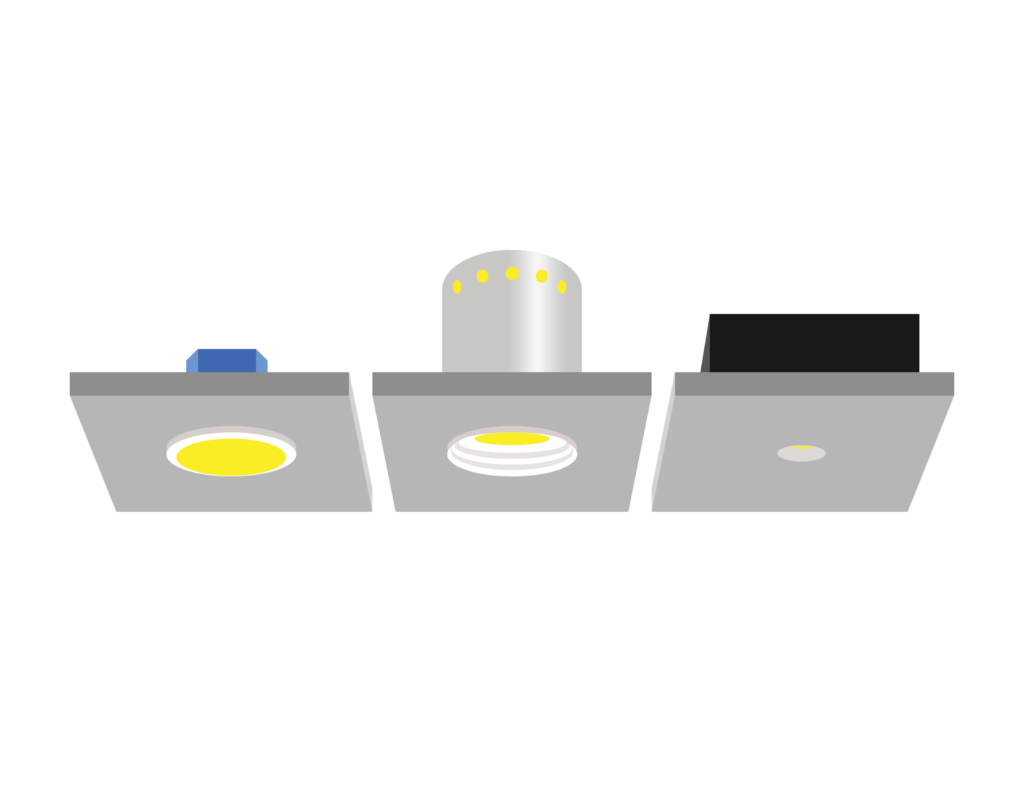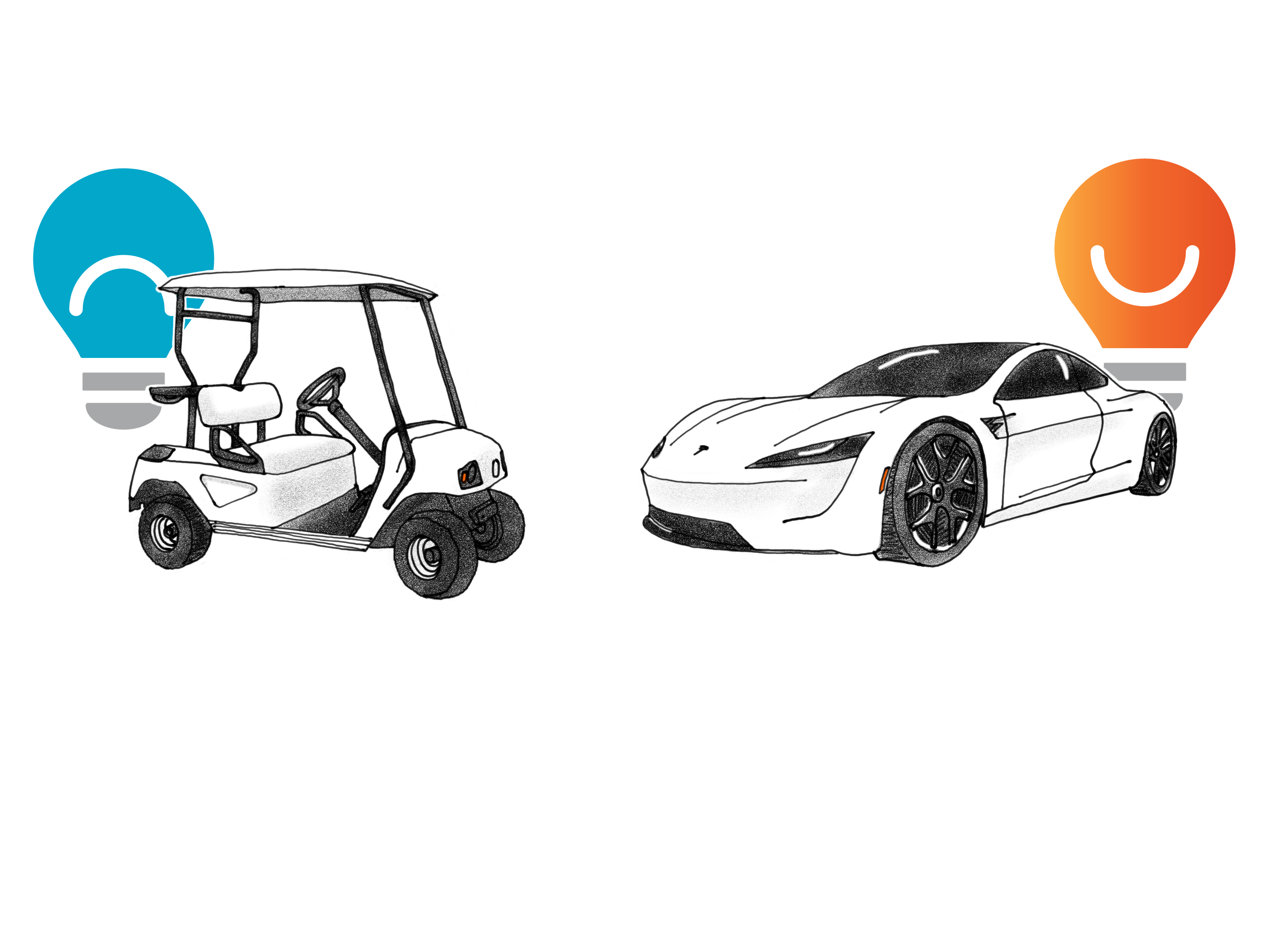Here’s the scenario: you finally decide to trade in your car for new one, and make the decision to go electric. You’re thinking you’ll get a Tesla: high tech, fast, beautiful and long range. But without knowing it, you bought a golf cart. It’s electric, like a Tesla. What’s the difference?
“We’re getting LEDs.”
When I ask homeowners if they know what kind of lighting is going into their home, many will answer “LED.” The acronym- Light Emitting Diode- has come to mean “high tech better lighting” in just a few years. It was not long ago when LED meant “ugly blue light that had major glare, flickered and made your skin look bruised.”
I specify every project as 100% LED. The problem is that they are still making golf carts, and very few of us are getting Teslas.
In lighting terms, that means “we’re getting LEDs” can mean any of the following:
- We’re getting LED’s inside of 1974-styled 6″ recessed cans that leak air and cause glare.
- We’re getting LED “disk lights” that look just like recessed downlights but require only a junction box in the ceiling. And they will look just like recessed downlights- the kind of recessed downlight that has a frosted lens and ridiculous amount of glare.
- We’re getting LEDs with no adjustability
- We’re getting LEDs with poor dimming.
- We’re getting LEDs with cheap plastic trims.
- We’re getting LEDs with short lifespans.
- We’re getting LEDs with poor color rendering.
- We’re getting LEDs with blue colored light.
- We’re getting LEDs that flicker.
- We’re getting LEDs in field-serviceable insulation-contact-rated housings with 35° adjustability and 360° rotation with chip-on-board 95 CRI 3000°K LEDs with warm-dim to 2000°K and a forward/reverse phase dimmable driver to 1%, white cast aluminum trim with torsion springs and matte diffuse reflector and field changeable optics for variable beam spreads. Thermal management is handled by extruded aluminum heatsink.
Of the ten possibilities above, nine are golf carts and one is a Tesla. I bet you are smart enough to figure out which one is the Tesla.

The real problem, of course, is that to design and engineer a Tesla one requires a team of professionals and a pretty awesome factory. The same is true of quality LED product, and that makes them harder to find and more expensive.
Tesla’s have a waiting list- so do good LED’s. It’s usually only 4 weeks, but if you walk into a showroom or distributor and ask to buy 40 recessed downlights, the chances of you walking out with 40 proverbial golf carts is close to 100%.
Does this mean good LEDs, like Teslas, will cost more than golf carts? Yes. But keep in mind that even Tesla has several models to choose from, and LEDs are no different. The trick is finding the right LED for you.
If that sounds daunting, find someone who can help.
Like us.*
*Shameless self-promotion.
